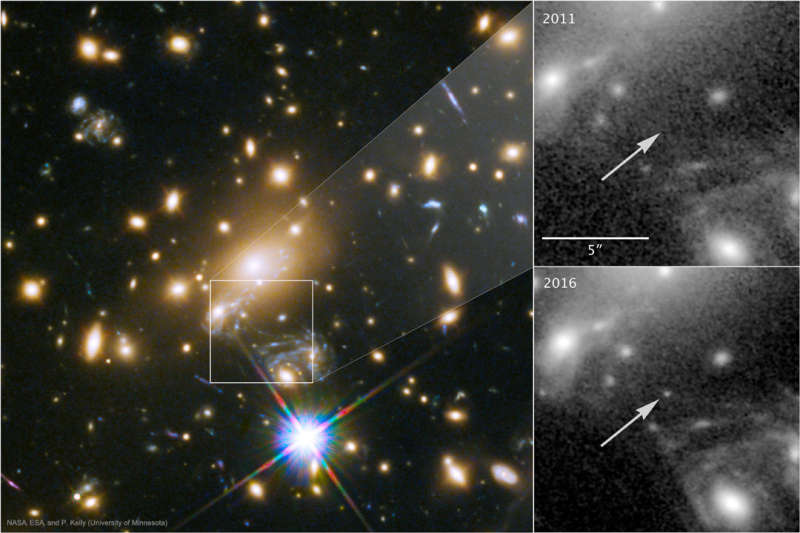Explanation: Was this flash the farthest star yet seen? An unexpected flash of light noticed fortuitously on Hubble Space Telescope images may prove to be not only an unusual gravitational lensing event but also an image of a normal star 100 times farther away than any star previously imaged individually. The featured image shows the galaxy cluster on the left complete with many yellowish galaxies, while on the right is an expanded square where a source appeared in 2016 that was not evident in 2011. The spectrum and variability of this source are strangely unlike a supernova, but rather appear more consistent with a normal blue supergiant star magnified by about a factor of 2000 by a confluence of aligned gravitational lenses. Dubbed Icarus, the source is in a galaxy well behind the galaxy cluster and far across the universe -- at redshift 1.5. If the lens interpretation is correct and Icarus is not an exploding star, further observations of it and other similarly magnified stars could give information about the stellar and dark matter content in the galaxy cluster and the universe.
Open Science:
Browse 1,600+ codes in the Astrophysics Source Code Library
1999 2000 2001 2002 2003 2004 2005 2006 2007 2008 2009 2010 2011 2012 2013 2014 2015 2016 2017 2018 2019 2020 2021 2022 2023 2024 2025 |
Yanvar' Fevral' Mart Aprel' Mai Iyun' Iyul' Avgust Sentyabr' Oktyabr' Noyabr' Dekabr' |
NASA Web Site Statements, Warnings, and Disclaimers
NASA Official: Jay Norris. Specific rights apply.
A service of: LHEA at NASA / GSFC
& Michigan Tech. U.
|
Publikacii s klyuchevymi slovami:
star - gravitational lens - zvezdy - gravitacionnaya linza
Publikacii so slovami: star - gravitational lens - zvezdy - gravitacionnaya linza | |
Sm. takzhe:
Vse publikacii na tu zhe temu >> | |
